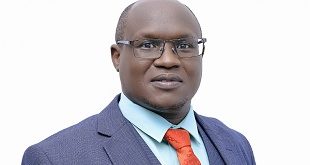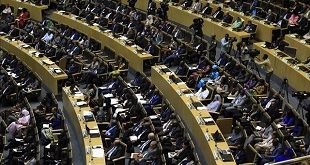
By Agencies
Delayed onset muscle soreness is common after exercise and usually means your muscles are getting stronger
Starting a workout program can be challenging. Making the time to exercise, creating a balanced routine, and setting goals are hard enough, but add to that the muscle soreness that comes with adapting to that regimen, and it may be difficult to stay on track.
Chances are you won’t be leaping out of bed to get to the gym when it hurts to hold your arm up to brush your teeth.
After participating in some kind of strenuous physical activity, particularly something new to your body, it is common to experience muscle soreness, say experts.
“Muscles go through quite a bit of physical stress when we exercise,” says Rick Sharp, professor of exercise physiology at Iowa State University in Ames.
“Mild soreness is just a natural outcome of any kind of physical activity,” he says. “And they’re most prevalent in beginning stages of a program.”
Delayed Onset Muscle Soreness
Exercise physiologists refer to the gradually increasing discomfort that occurs between 24 and 48 hours after activity as delayed onset muscle soreness (DOMS), and it is perfectly normal. “Delayed onset muscle soreness (DOMS) is a common result of physical activity that stresses the muscle tissue beyond what it is accustomed to,” says David O. Draper, professor and director of the graduate program in sports medicine/athletic training at Brigham Young University in Provo, Utah.
To be more specific, says Draper, who’s also a member of the heat-responsive pain council, delayed onset muscle soreness occurs when the muscle is performing an eccentric or a lengthening contraction. Examples of this would be running downhill or the lengthening portion of a bicep curl. “Small microscopic tears occur in the muscle,” he says.
The mild muscle strain injury creates microscopic damage to the muscle fibres. Scientists believe this damage, coupled with the inflammation that accompanies these tears, causes the pain.
“The aches and pains should be minor,” says Carol Torgan, an exercise physiologist and fellow of the American College of Sports Medicine, “and are simply indications that muscles are adapting to your fitness regimen.”
Even bodybuilders get them
No one is immune to muscle soreness. Exercise neophytes and body builders alike experience delayed onset muscle soreness.
“Anyone can get cramps or DOMS, from weekend warriors to elite athletes,” says Torgan. “The muscle discomfort is simply a symptom of using your muscles and placing stresses on them that are leading to adaptations to make them stronger and better able to perform the task the next time.”
But for the deconditioned person starting out, this can be intimidating. People starting exercise program need guidance, Torgan says. “The big problem is with people that aren’t very fit and go out and try these things; they get all excited to start a new class and the instructors don’t tell them that they might get sore,” she says. “To them they might feel very sore, and because they aren’t familiar with it, they might worry that they’ve hurt themselves. Then they won’t want to do it again.”
Letting them know it’s OK to be sore may help them work through that first few days without being discouraged.
Ease those aching muscles
So what can you do to alleviate the pain?
“Exercise physiologists and athletic trainers have not yet discovered a panacea for DOMS,” says Draper, “however, several remedies such as ice, rest, anti-inflammatory medication, massage, heat, and stretch have been reported as helpful in the process of recovery.” Stretching and flexibility are underrated, says Sharp. “People don’t stretch enough,” he says. “Stretching helps break the cycle,” which goes from soreness to muscle spasm to contraction and tightness. Take it easy for a few days while your body adapts, says Torgan. Or try some light exercise such as walking or swimming, she suggests. Keeping the muscle in motion can also provide some relief.
“Probably the most important thing is to have a cool-down phase after your workout,” says Draper. Right before finishing, include 10 or so minutes of “easy aerobic work such as jogging or walking followed by stretching.” At Brigham Young, Draper has been researching the use of heat remedies to treat muscle soreness. In clinical tests, a portable air-activated heat wrap — in this case a product called ThermaCare — applied directly to the skin was beneficial to subjects.
 The Independent Uganda: You get the Truth we Pay the Price
The Independent Uganda: You get the Truth we Pay the Price


